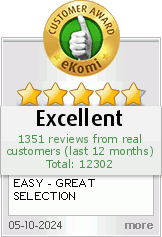Guide to Native Plants and Gardening
Gardening with native plants is gaining popularity as more people seek sustainable landscapes. Native plants evolved locally over thousands of years, developing deep relationships with native wildlife and adapting to the local climate and soil. They require less maintenance and sustain biodiversity far better than exotic ornamentals, and native flowers, shrubs, and trees can be just as beautiful. When you incorporate native plants into your yard and garden, you're helping to support wildlife populations and nurture the local ecosystem.
Planning Your Garden
Assessing and understanding your site's unique conditions is a key first step when creating a native plant garden. Observe which areas are in sunlight and shade throughout the day, note which spots tend to be wetter or drier, and test the soil's pH and composition. All of these factors will determine which native plants will thrive in your garden.
Once you know your site's conditions, map out garden beds and boundaries. Group plants with similar light and moisture needs together. Consider each plant's mature size to make sure that you allow enough room for the garden to grow and evolve. This includes making sure that larger plants don't block shorter, smaller flowers from getting enough sunlight. You should also develop a long-term plan for phasing in new beds as previous plantings become established. Over time, thoughtful site-specific planning can result in a naturally balanced, low-maintenance native garden that gracefully matures over many seasons.
Soil Preparation
Native plants thrive in healthy soil teeming with microbial life. Improve your soil by incorporating several inches of compost or other organic matter, like leaves or wood chips. Avoid synthetic fertilizers, which can harm soil biology. Test and amend the pH if needed to match the requirements of the plants you choose. Avoid chemical herbicides: Eliminate weeds by pulling them by hand or by solarizing the soil, which involves covering the ground with plastic sheeting that traps heat, killing weeds and pathogens.
Plant Selection and Planting
Choosing the right native plants is key to creating a thriving, sustainable landscape. Select species that naturally occur in your region and match the site conditions. Seek native flowering plants to support pollinators. Include native grasses and sedges for sheltering birds. Research which plants host butterflies and larvae. Aim for biodiversity: Include a mix of wildflowers, ferns, vines, shrubs, and trees. When purchasing plants, inspect the roots and avoid pot-bound plants.
Once you're ready for planting, be sure to allow enough space between plants to give them room to grow to maturity. Dig holes to the depth of the root mass, and gently loosen encircling roots before planting. Backfill with native soil, water thoroughly, and apply mulch, which will block light from reaching the soil and discourage weed seeds from sprouting. Organic mulch, like wood chips, also conserves moisture, cools the soil, and replenishes nutrients as it decomposes.
Upkeep
Once established, native plants require less maintenance than exotic species, but a bit of care will keep your garden looking its best. Water deeply and less frequently, allowing the top few inches of soil to dry between watering. Hand-pull weeds before they spread. Prune dead wood and shape overgrown plants after flowering. Remove diseased plants promptly to limit damage to neighboring plants. And let leaf litter accumulate as natural mulch.
As your native garden matures, you'll need less effort to sustain its natural seasonal rhythms. One of the most important things to remember is that you should aim to be a thoughtful observer, letting plants grow and flower at their own pace as much as possible. Step in only when needed to enhance the garden's ecological harmony. With care aligned to their adapted traits, native plants will thank you with resiliency and abundant beauty.
- Putting Down Roots With Native Plants
- Native Plants
- Native Gardening
- Natural Habitats: Gardening With Native Plants
- Gardening for Wildlife With Native Plants
- Native Plants for Wildlife Habitat and Conservation Landscaping
- Six Steps to a Successful Seeding
- Prime Your Native Garden for a Successful Growing Season
- Why Native Plants Matter
- Five Reasons Native Plants Help You Save Money and the Planet
This article was created by Chad Kremp



